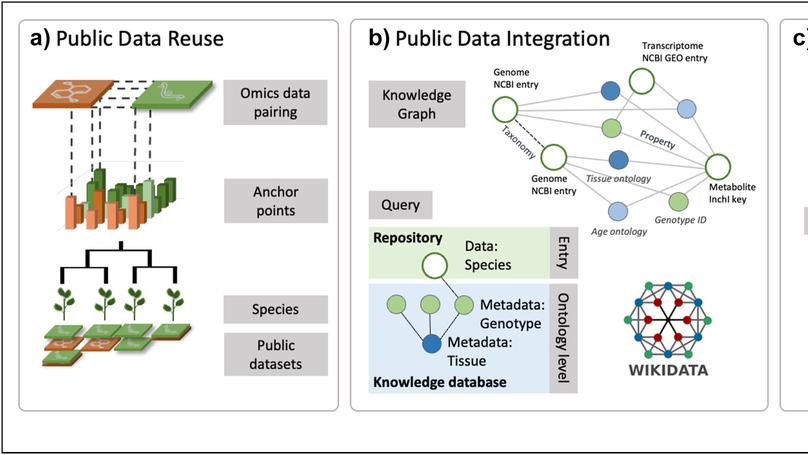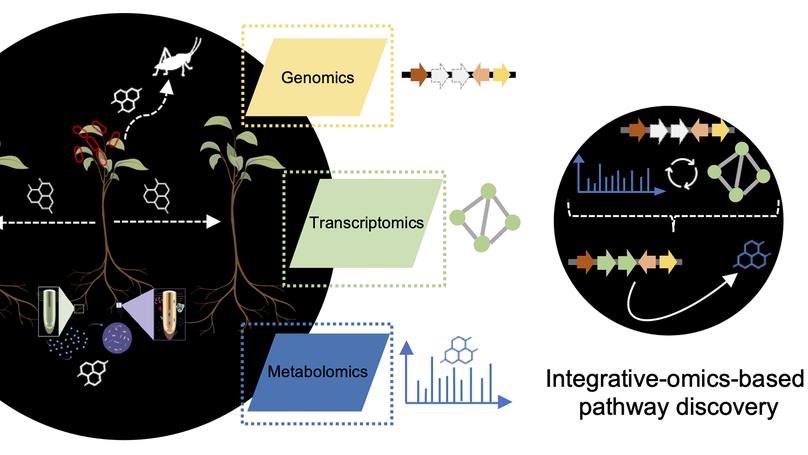About
- Integrative -omics
- Bioinformatics
- Gene regulatory networks
- Biotic interactions and co-evolution
PhD in Bioinformatics, 2014
University of Camerino Italy
MSc. in Bioinformatics, 2008
Nottingham Trent University UK
BSc in Biotechnology, 2006
University of Pune India
Research
Wageningen University and Utrecht University, the Netherlands
We developed a method that integrates metabolomics and transcriptomics data to predict putative biochemical reactions representing complete or partial steps of biosynthetic pathways. This approach provides a holistic framework for plant metabolic reconstruction, offering researchers a powerful tool to unravel complex metabolic networks and generate testable hypotheses for pathway elucidation. Our work contributes to the growing body of research advancing multi-omics integration and natural product discovery:
Merging genomes, metabolomes, and transcriptomes to uncover biosynthetic pathways PLOS Biology, 2025
Recent advances in computational metabolomics and natural product pathway mining Current Opinion in Plant Biology, 2024
Linking genes to molecules: Integrative approaches for specialized metabolism Natural Product Reports, 2022
Rothamsted Research & University of Exeter, UK
- Our work on brownplanthoppers in elucidating the role of the cytochrome P450 CYP6ER1 in resistance to neonicotinoid insecticides provided a novel example of gene duplication and neofunctionalization leading to resistance development in this species. Brown planthopper is the most devastating pest of south-east Asia and the findings of this study have helped in building suitable IPM strategies.
- Transcriptional plasticity of phytophagous generalist pests has always puzzled researchers. To further explore this, I have assembled the genome of a glasshouse whitefly, Trialeurodes vaporariorum, and helped perform transcriptomics in order to identify differences in expression of key genes on challenging host-plants. The findings in this work provide further insights in the ability of generalist pests to effectively reprogram genes expression during host-shift and the potential implication of transcriptional plasticity on their sensitivity to synthetic insecticides.
- My primary research has exploited cutting edge bioinformatics approaches to consistently progress beyond the state of the art. I have developed a novel software pipeline to electronically extend partial gene transcriptsup to full gene lengths, using raw RNA-seq data. This has helped characterize the correct number of genes, from different families, responsible for detoxifying allelochemicals in one of the solitary red mason bees.
- I also assembled the first genome sequence of a solitary bee Osmia bicornis and together with a PhD student showed that it lacks the CYP9Q subfamily of CYP450s but, despite this, it exhibits low acute toxicity to the neonicotinoid thiacloprid. Functional studies revealed that a P450 within the CYP9BU subfamily, with recent shared ancestry to the Apidae CYP9Q subfamily, metabolises thiacloprid in vitro and confers tolerancein vivo. This study is the landmark discovery of inherent tolerance of thiacloprid in solitary bees and can be leveraged to avoid negative pesticide impacts on these important pollinators.
- My most impactful academic output has been the work on aphid, Myzus persicae, and its host-shift to tobacco. In this work I used transcriptomics and genomics approaches to identify molecular signatures and genomic rearrangements that shape host mediated resistance evolution in aphids. My contribution in this work has laid the foundation of further experimental work that has provided key insights into the evolutionary processes facilitating insect adaptation to a novel host plant. Importantly, all genomic resources, along with four insect genomes and software developed by me, are used by many groups, extending beyond my field of expertise, to explore new and exciting avenues in molecular and evolutionary biology.
Experience
Featured Publications
During evolution, plants have developed the ability to produce a vast array of specialized metabolites, which play crucial roles in helping plants adapt to different environmental niches. However, their biosynthetic pathways remain largely elusive. In the past decades, increasing numbers of plant biosynthetic pathways have been elucidated based on approaches utilizing genomics, transcriptomics, and metabolomics. These efforts, however, are limited by the fact that they typically adopt a target-based approach, requiring prior knowledge. Here, we present MEANtools, a systematic and unsupervised computational integrative omics workflow to predict candidate metabolic pathways de novo by leveraging knowledge of general reaction rules and metabolic structures stored in public databases. In our approach, possible connections between metabolites and transcripts that show correlated abundance across samples are identified using reaction rules linked to the transcript-encoded enzyme families. MEANtools thus assesses whether these reactions can connect transcript-correlated mass features within a candidate metabolic pathway. We validate MEANtools using a paired transcriptomic-metabolomic dataset recently generated to reconstruct the falcarindiol biosynthetic pathway in tomato. MEANtools correctly anticipated five out of seven steps of the characterized pathway and also identified other candidate pathways involved in specialized metabolism, which demonstrates its potential for hypothesis generation. Altogether, MEANtools represents a significant advancement to integrate multi-omics data for the elucidation of biochemical pathways in plants and beyond.

Plants have evolved complex bouquets of specialized natural products that are utilized in medicine, agriculture, and industry. Untargeted natural product discovery has benefitted from growing plant omics data resources. Yet, plant genome complexity limits the identification and curation of biosynthetic pathways via single omics. Pairing multi-omics types within experiments provides multiple layers of evidence for biosynthetic pathway mining. The extraction of paired biological information facilitates connecting genes to transcripts and metabolites, especially when captured across time points, conditions and chemotypes. Experimental design requires specific adaptations to enable effective paired-omics analysis. Ultimately, metadata standards are required to support the integration of paired and unpaired public datasets and to accelerate collaborative efforts for natural product discovery in the plant research community.

With the emergence of large amounts of omics data, computational approaches for the identification of plant natural product biosynthetic pathways and their genetic regulation have become increasingly important. While genomes provide clues regarding functional associations between genes based on gene clustering, metabolome mining provides a foundational technology to chart natural product structural diversity in plants, and transcriptomics has been successfully used to identify new members of their biosynthetic pathways based on coexpression. Thus far, most approaches utilizing transcriptomics and metabolomics have been targeted towards specific pathways and use one type of omics data at a time. Recent technological advances now provide new opportunities for integration of multiple omics types and untargeted pathway discovery. Here, we review advances in plant biosynthetic pathway discovery using genomics, transcriptomics, and metabolomics, as well as recent efforts towards omics integration. We highlight how transcriptomics and metabolomics provide complementary information to link genes to metabolites, by associating temporal and spatial gene expression levels with metabolite abundance levels across samples, and by matching mass-spectral features to enzyme families. Furthermore, we suggest that elucidation of gene regulatory networks using time-series data may prove useful for efforts to unwire the complexities of biosynthetic pathway components based on regulatory interactions and events.
Contact
- Innovalaan 1, Venlo, Maastricht University 5928 SX
- Brightlands Future Farming Institute
- Mon-Wed-Thu-Fri 9.00 to 17:00
- Book an appointment
- DM Me